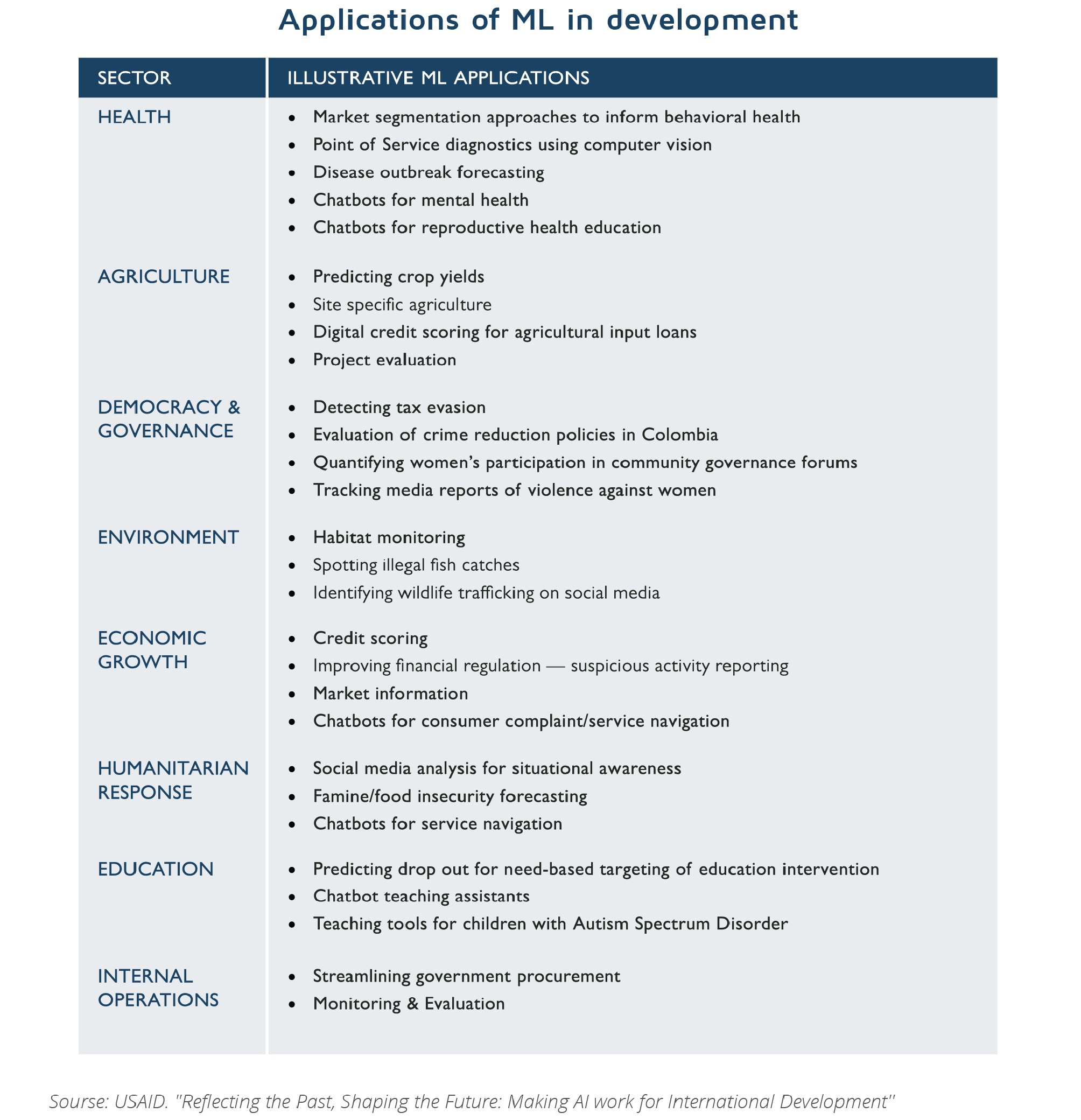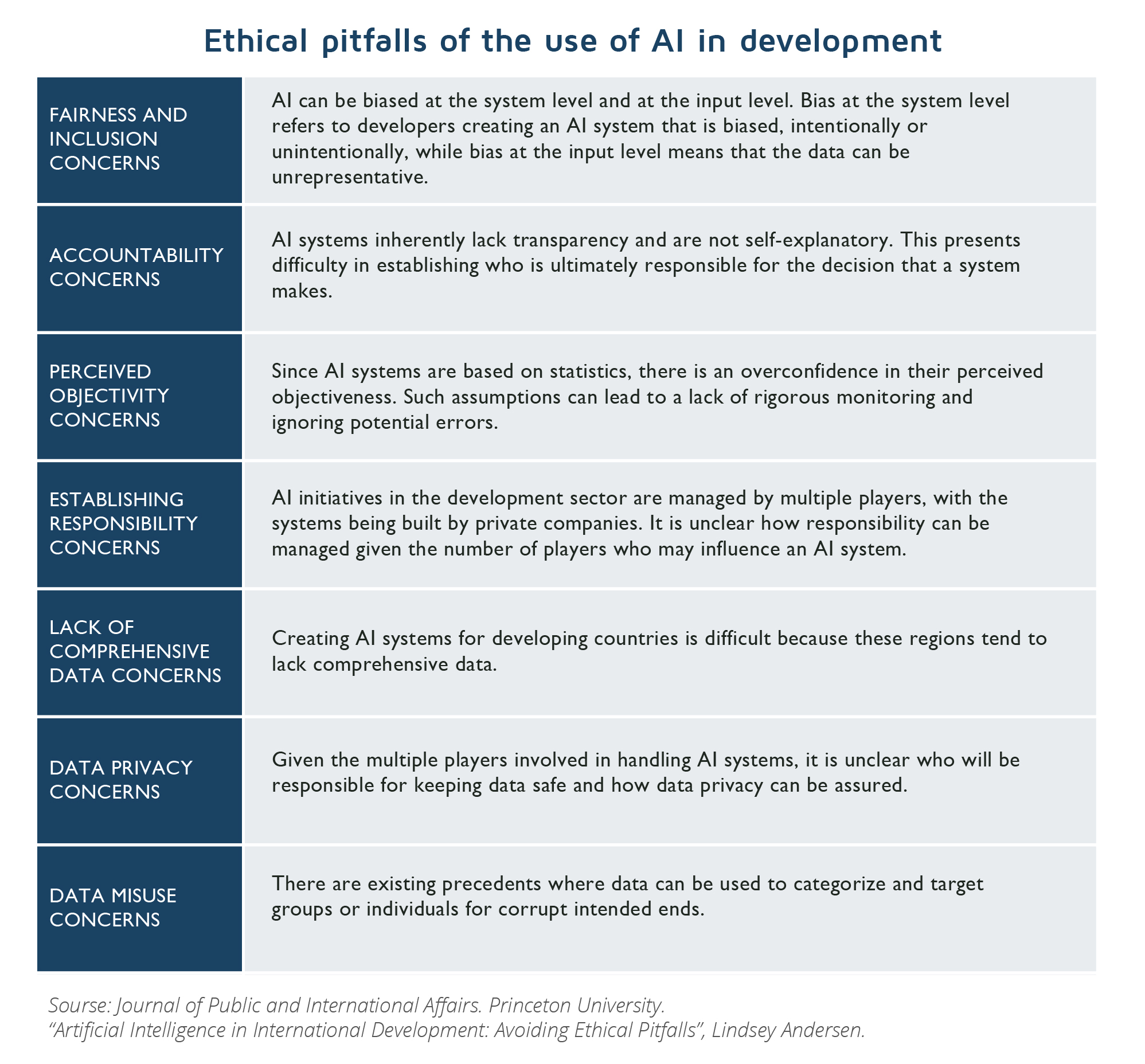The international development sector is enthusiastic about the use of Artificial Intelligence (AI) to solve the world’s problems. However, this enthusiasm is coupled with concerns regarding the ethical aspects of implementing the technology. These fears have given rise to a new area of research – the convergence of artificial intelligence and ethics. Meanwhile, an increasing number of important international organizations have published guidelines concerning the ethical pitfalls and responsible use of AI in the development sector. In this article, DevelopmentAid offers a detailed look at this evolving sector.
The benefits of AI technology in development
AI can potentially predict disease outbreaks, help farmers to adjust to climate change, offer remote medical diagnoses or evaluate situations in inaccessible conflict regions. International development implementers are increasingly turning to AI for more effective solutions. Currently, the majority of AI initiatives still revolve around the research, development and piloting stages. The development sectors which are expected to be best served by the use of AI are healthcare, agriculture and education. Beyond the problem-solving nature of AI, there is also an economic rationale for the use of the technology. It is expected that AI will contribute $15.7 tn to the global economy by 2030 with China and North America benefiting most from this injection.

The danger of AI technology: reproduction of existing bias and inequalities
This data revolution has the potential to enable the field of international development to be better informed. The main drivers are the growing amount of available real-time data and the improving digital tools to quantify and analyze it. However, “AI systems are powerful analytical tools and, without proper consideration of the ethical risks, they can harm the very communities they are designed to help”, warns Lindsey Andersen in her 2019 paper “Artificial Intelligence in International Development: Avoiding Ethical Pitfalls”. Many of the concerns regarding the use of AI in development have been explained in a working paper published by the International Development Innovation Alliance. The paper states that the technology could potentially reproduce the structural bias and inequality that already exists on a global and local scale.
Currently, the main areas of ethical concern in the development sector are fairness and inclusion; transparency, responsibility and accountability; data limitations; and privacy and security. Although in the development world the use of AI is still at an early stage, there are numerous examples in commercial settings of how AI can go wrong. In 2014, Amazon developed a recruitment tool to identify potential software engineers to be hired. However, the system discriminated against women and the company abandoned its use in 2017. In 2016, a journalistic investigation showed how COMPAS, a nationwide tool used in the USA by judges to make decisions regarding the likelihood that criminals will re-offend, was biased against black individuals.

AI technology could further foster the global divide
Today, the development and implementation of AI is heavily concentrated in the developed world. This could lead to global exclusion, with the target communities of development programs being mere consumers of AI technology rather than participants in the development process. There is also a low capacity in developing countries to manage and accommodate the rise of AI, therefore an unequal distribution of the benefits of AI could be initiated. A 2019 Government AI Readiness Index shows just how unprepared the governments are in the Global South to implement AI technologies. The top 20 is dominated by Western European governments as well as Canada, Australia, New Zealand and four developed Asian economies. There are no Latin American or African countries in the top 20.
The new data revolution is clearly taking off globally and also occupying center stage of international development. It is, however, still unclear whether the ethical principles are being maintained and whether practical answers to the ethical questions raised above can be found.
In the light of such a complicated context with regard to the use of AI, DevelopmentAid will continue to bring information on the best practices of how to engage ethically with AI technology. You can Subscribe to our newsletter and stay tuned for future articles on the use of AI in international development.

